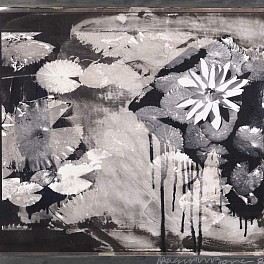BIOGRAPHY

1925 - 2008
Born as Milton Rauschenberg on October 22, 1925, in Port Arthur, Texas, Robert Rauschenberg began to study pharmacology at the University of Texas and imagined himself first as a minister and later as a pharmacist. Later he enrolled at the Kansas City Art Institute and traveled to Paris to further his study. When he returned to New York in 1953 after a short tour of duty in the Navy, Rauschenberg completed a series of black paintings, using newspaper as the background, and began work on sculptures created from wood, stones, and other found object materials. This helped him develop his talent for drawing and his interest in the artistic representation of everyday objects and people. After a year he left for New York to make it as a painter. Once there, exposed to the chaos and creativeness of city life, Rauschenberg for the first time started to realize what as a painter he could contribute.
Rauschenberg's excitement for pop culture led him to search for a new way of painting. He found his signature style by using materials commonly found outside of the artist's reach. He would cover a canvas with house paint, or paint a tire of a car and run it over paper to create a painting. By 1958, at the time of his first solo exhibition his work had moved from abstract to what he termed "combines". These combines were meant to express both the finding and forming of combinations in three-dimensional sculptures or what he called collages. This style cemented his place in art history.
His "combines" seem to be more about the public and what's going on in the public, and the world surrounding Rauschenberg, more than they were about the Rauschenberg himself. This did not mean he disconnected himself from the world of personal expression. In commenting on the world around him, Rauschenberg is making a statement about himself. As the artist states, "I want my paintings to be reflections of life ... your self-visualization is a reflection of your surroundings.
The very diverse components which make up Rauschenberg's creations do not and are not intended to have a coherent theme. They actually stand to represent the diverse and all too often confusing, misgiving and realistic signs of the mass consumer media we are faced with every day.
Rauschenberg's works, like many of the pop culture area are representations of a time when what we had meant was more than what we were. His art, like others of his time was an attempt to reach out to the public and make them aware of where we came from and where we were. It was an attempt, as bold as it could be, to slap people in the face and try to wake them up to see the true reality of life. To counter impose what people thought was "in" and what was actually real. Did he succeed? We are still asking the same questions decades later.
